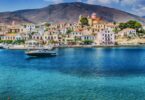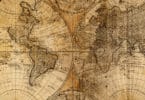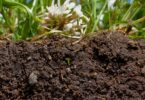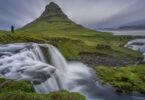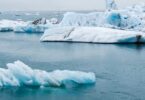Ecosystem Quiz:
The word ‘‘ecosystem’’ was first coined by
(a) Weaver and Clements
(b) A.G. Tansley
(c) E.P. Odum
An ecological system is a
(a) Biological system
(b) Biogeochemical system
(c) Physicochemical system
(d) Bioecological system
The ’pulse’ of the aquatic environment can be ascertained by measuring
(a) nitrogen
(b) oxygen
(c) alkalinity
(d) conductivity
In an ecosystem
(a) Cycling of energy and nutrients is a coupled process
(b) Cycling for energy is an independent process.
(c) The movement of energy is unidirectional
(d) Macro and micronutrients cycle at the same pace
Which one of the following is an aquatic ecosystem?
(a) Wetland
(b) Desert
(c) Mountain
(d) Island
Which among the following is an abiotic factor?
(a) Mites
(b) Moisture
(c) Insects
(d) Rodents
The rate of deforestation is high in
(a) Tropical zone
(b) Desert areas
(c) Temperate zone
(d) Boreal forest
Which among the following is not an example of aquatic habitat?
(a) Ponds
(b) Swamps
(c) Lakes
(d) Forests
Related: Airport quiz questions and answers
Which among the following shows unidirectional flow in an ecosystem?
(a) Carbon
(b) Oxygen
(c) Nitrogen
(d) Energy
An ecosystem that can be easily damaged but can recover after some time if the damaging effect stops will have
(a) Low stability and low resilience
(b) High stability and high resilience
(c) Low stability and high resilience
(d) High stability and low resilience
Which one of the following is the indirect use of forests?
(a) Medicinal plants
(b) Checking soil erosion
(c) Building material
(d) Grazing
All the ecosystems in a geographical area form a bigger unit called.
(a) biosphere
(b) territory
(c) biome
(d) community
The Brackish water ecosystem contains a high amount of __ content
(a) salt
(b)sugar
(c) iron
(d) manganese
Anmanmadeial ecosystem is
(a) Less in diversity
(b) More in Diversity
(c) Man does not make an ecosystem
(d) More stable than the natural Ecosystem
Related: Funny Facts about the Earth
A natural region has the similarity of
(a) climate and natural vegetation
(b) climate and occupation
(c) soil and drainage
(d) economic base and recess
An artificial ecosystem is represented by.
(a) pisciculture tank
(b) agricultural land
(c) zoo
(d) aquarium
Gardens are examples of
(a) Natural ecosystems
(b) Artificial ecosystems
(c) Ecology
(d) Environment
Which is the most stable Ecosystem?
(a) Desert
(b) Ocean
(c) Mountain
(d) Forest
Which among the following is not a natural ecosystem?
(a) Forest
(b) Pond
(c) Lake
(d) Gardens
Which Ecosystem shows maximum genetic diversity?
(a) Coniferous forests
(b) Tropical rainforests
(c) Subtropical forests
(d) Temperate forests
Related: famous Voyagers quiz
Forests are examples of
(a) Natural ecosystems
(b) Artificial ecosystems
(c) Virtual Environment
(d) Synthetic Environment
The biotic part of the Ecosystem includes
(a) Producers
(b) Consumers
(c) Decomposers
(d) All of these
Which among the following constitutes the upper part of the aquatic Ecosystem?
(a) Fishes
(b) Planktons
(c) Algae
(d) Crustaceans
An ecosystem consists of.
(a) A living community and its environment
(b) All the plants and animals of an area
(c) Carnivores and herbivores of an area
(d) Producers, consumers, and decomposers in a particular locality
Which is the largest existing mangrove forest in the world?
(a) African forest
(b) Alpine forest
(c) Sunderbans
(d) Australian forest
The Ecosystem consists of
(a) Producers
(b) Consumers
(c) Decomposers
(d) All of these
Related: Coffee exercises with answers
Which one of the following is a terrestrial ecosystem?
(a) Pond
(b) Lake
(c) Semi-arid area
(d) river
Which of the following is an artificial ecosystem?
(a) Rice-field
(b) Forest
(c) Grassland
(d) Lake
Which of the following is a “dynamic living entity”?
(a) Tree
(b) Water
(c) Forest
(d) Air
Ecosystem is defined as
(a) Relation between plants and animals
(b) Relation between biotic and physical components
(c) Relation between producers and decomposers
The evergreen rainforest is mainly found in regions with well-distributed annual rainfall.
(a) Below 50 cm
(b) 50-100 cm
(c) 100-200 cm
(d) More than 200 cm
Related: objective type questions on Consumer Behavior
The lentic Ecosystem includes which of the following water:
(a) Rain
(b) Running
(c) Standing
(d) Gravitational
In an ecosystem with abiotic components, which of the following occurs
(a) Flow of energy
(b) Cycling of materials
(c) Consumers
(d) Flow of energy and cycle of materials
Bamboo is classified as
(a) Tree
(b) Grass
(c) Shrub
(d) Herb
Ecosystem may be defined as
(a) Group of plants which act as the energy suppliers
(b) Group of organisms which form a population
(c) Functional unit for ecological studies
In a pond ecosystem, benthos means
(a) Primary consumers in the depth of a pond
(b) Zooplankton on the water surface
(c) Periphyton
(d) Epineuston
Which of the following ecosystems would be most stable?
(Manmadeade forest
(b) Freshwater lake
(c) Saline Lake
(d) Natural forest
Related: quiz on Planck’s Quantum theory
Ecological pyramids are of
(a) Two types
(b) Three types
(c) Four types
(d) Five types
A lake ecosystem is
(a) Artificial
(b) Abiotic
(c) Natural
(d) Hydrological
In an ecosystem, bacteria are considered as
(a) Microconsumers
(b) Macroconsumers
(c) Primary consumers
(d) Secondary consumers
The ecosystem lithosphere is concerned with
(a) Gases
(b) Minerals
(c) Water
The net primary productivity of an ecosystem is
(a) Total weight of green plants – respiratory losses
(b) Total weight of green plants + respiratory losses
(c) Respiratory losses alone
Related: Mitosis multiple choice questions
The primary producer of an ecosystem is
(a) Herbivores
(b) Carnivores
(c) Both Herbivores and Carnivores
(d) Green plants
The pyramid of energy in a forest ecosystem is
(a) Always upright
(b) Always inverted
(c) Both upright and inverted
Which of the following ecosystems has the highest gross primary productivity?
(a) Grassland
(b) Coral reef
(c) Mangroves
(d) Rainforest
Which of the following abundantly occurs in a pond ecosystem?
(a) Producer
(b) Consumer
(c) Top consumer
(d) Decomposers
Related: Polynomials quiz with answers
The largest ecosystems in the world are
(a) Grasslands
(b) Great lakes
(c) Oceans
(d) Forests
In a tree ecosystem, the pyramid of numbers is
(a) Upright
(b) Inverted
(c) Both of the above
(d) None of the above
The driving force of an ecosystem is
(a) Producer
(b) Carbohydrates in plants
(c) Biomass
(d) Solar energy
An ecosystem is a complex interacting system of
(a) Individual
(b) Population
(c) Communities and their physical environment
(d) Communities and their soil conditions
Which of the biomes is called the “Bread Basket” of the world?
(a) Mid-latitude grasslands
(b) Taiga
(c) Mediterranean
(d) Tropical Savannah
Related: cube and dice quiz
Mangrove forests occur in
(a) high mountains
(b) snowy plains
(c) coastal swamps
(d) interior plateaus
Among the animal groups given below, which one appears to be more vulnerable to extinction?
(a) Insects
(b) Mammals
(c) Amphibians
(d) Reptiles
Which of the following biotic communities would have trees?
(a) Tundra
(b) Taiga
(c) Shrubland
(d) Intertidal zone
Taiga is a forest of
(a) herbal trees
(b) softwood trees
(c) mixed trees
(d) alpine trees
Sandal Wood trees are mostly found in _
(a) Tropical Evergreen Forests
(b) Tropical most Decidous
(c) Alpine forests
(d) Tropical Thorn Forests
Related: General Mental Ability: Test, Questions, MCQs
Energy _____ in the Ecosystem.
(a) is released
(b) is absorbed
(c) flows
Llanos are the grasslands of
(a) Guyana Highlands
(b) Brazilian Highlands
(c) Argentina
(d) Chile
The set of ecosystems is called a __
(a) Biome
(b) Climate
(c) Subsystem
(d) Structure
The Temperate grasslands of North America are known as:
(a) Pampas
(b) Downs
(c) Stepp
(d) Prairies
Related: Anaerobic respiration quiz
The locality where an organism lives is __
(a) Niche
(b) habitat
(c) environment
How do mangroves function as a safety hedge?
(a) The mangrove swamps separate the human settlements from the sea by a wide zone where people neither live nor venture out.
(b) The mangroves provide food and medicine that people need after any natural disaster.
(c) The tall mangrove trees with dense canopies serve as excellent shelter during a cyclone or tsunami.
(d) The mangrove trees do not get uprooted by storms and tides because of their extensive roots
An ecosystem gradually merges with an adjoining one through a transitional zone called the __
(a) ecological niche
(b) ecological footprint
(c) ecotone
The study of interaction between living organisms and their environment is called __
(a) ethnology
(b) ethology
(c) ecology
(d) entomology

